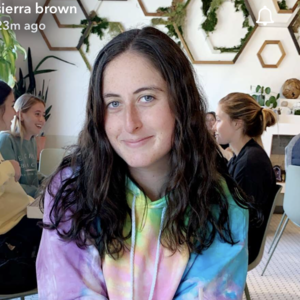From açaí to poké, food bowls are an undeniable trend dominating menus across the country. Just like other food trends, they have gained enough traction to undergo a variation of forms, from raw to cooked to blended. Communities of foodies have touted everything from their global flavors to their transportability, and these bowls seem to be here for the near future.
While some believe trends like these spontaneously acquire popularity, food anthropologists are frequently far ahead of the curve. In an attempt to capitalize on future obsessions, food companies hire experts to research the numerous behavioral and environmental factors that play a role in the development of a culinary craze. For a long time, specialists have successfully predicted future infatuations, but this digital age has surely changed the game.
Trend Growth

Before we evaluate technology’s role in the matter, we have to examine the ways trends grow and are predicted. Food fads are a product of an accumulation of cultural shifts. The culture surrounding food is shaped by lifestyle, behavior, related events, and the environment. For instance, the coveted obsession with meals in bowls was driven by the recent gluten-free movement, a new appreciation for Asian street food, a reoccurring passion for yoga, and desires for convenient, on-the-go foods. As explained by Dana Cowin, former Editor-in-Chief of Food & Wine Magazine, “a good trend is like an Impressionist painting… it’s something that looks like one thing, and then you dive in and see it’s really a collection of many little points of paint.” There are countless factors that work in tandem with one another when a trend emerges.
Trend Prognostication
Trend analysts who study cultural shifts have learned to identify these harmonious factors and predict their impact on popular dietary choices. The ability to foresee widespread changes in food preference is both a science and an art. Food trend prognostication requires expertise in sociology, data science, and human behavior. With a sociological approach, practitioners can focus on foundational changes in culture, identifying the ways in which these variations will manifest themselves in society. Anthropologists, psychologists, and economists all study the mental, physical, and social activity of individuals and groups, which is incredibly useful in understanding the reaction to a new fad. But in the end, human behavior is not completely predictable (even though it comforts us to believe the opposite). Some trends will never be caught before they become mainstream. In this sense, trend prognoses are an obscure art— sometimes people just don’t know what’s going to happen next.
Now let’s talk tech.
Anyone on Instagram, Facebook, or Twitter would agree that social media platforms play a substantial role in creating trends. In today’s world, the popularity of a food product is reliant on positive media exposure. If users see a plethora of posts depicting the same food, they might be more inclined to seek it out. This increased demand results in a shift in marketed products. Trendy foods have become more focused on being photogenic and aesthetically pleasing than ever before. The rainbow food trend speaks volume to this idea. From bagels to coffee to grilled cheese, the omnipresence of captivatingly colorful foods on Instagram transformed normally beige items into artificially vibrant hues. Part of the success of food in bowls is credited to their visual appeal. Açaí and poké bowls have fruits, vegetables, and proteins with energetic pigmentation: mouthwatering mango, ruby red raspberries, and tangy tuna. Now, trends not only have to please the stomach, but the eyes too.
The Influence of Social Media
Social media has undoubtedly transformed the dissemination of food trends. With the efficiency of communication, digital networks force trends to hit the markets more frequently than ever before. Jonathan Openshaw, editor for Mr Porter, claims that “our cut-and-paste digital culture has accelerated trends that may once have taken years to filter through society.” International connections have allowed food trends to become more and more the same around the world. What’s popular in Japan can quickly transcend the seas and become well-liked in New York. Media filter systems, algorithms that organize posts in an attempt to personalize information, consequently assist in the circulation of popular foods. When someone’s friends start to “like” and comment on food posts, similar ones will sort to the top of the user’s feed. Thus, what others like will more easily influence what you like.
Data Analytics
In terms of trend forecasts, the unprecedented access to and quantification of information has improved the predictability and accuracy of food fad prognostication. Social media analysts can now see if an emerging trend is well received through the number of “likes,” shares, and comments. This quantification of interests takes the uncertainty out of the analysis. Social media platforms provide indication of individual and public opinion. It is an outlet for expression; between Facebook statuses and Instagram stories, people share their everyday activities and how they made them feel. Tapping into this data provides food anthropologists with a better understanding of trend approval or dissatisfaction. Associations, like Global Food Forum and the National Restaurant Association, are relying more heavily on their team of social media analysts to create their culinary forecasts for the following year.
Next time a new menu item pops up at either Wilma’s or Zingerman’s you can now acknowledge the path it took to bring it to your attention!


